Toxic Soaps
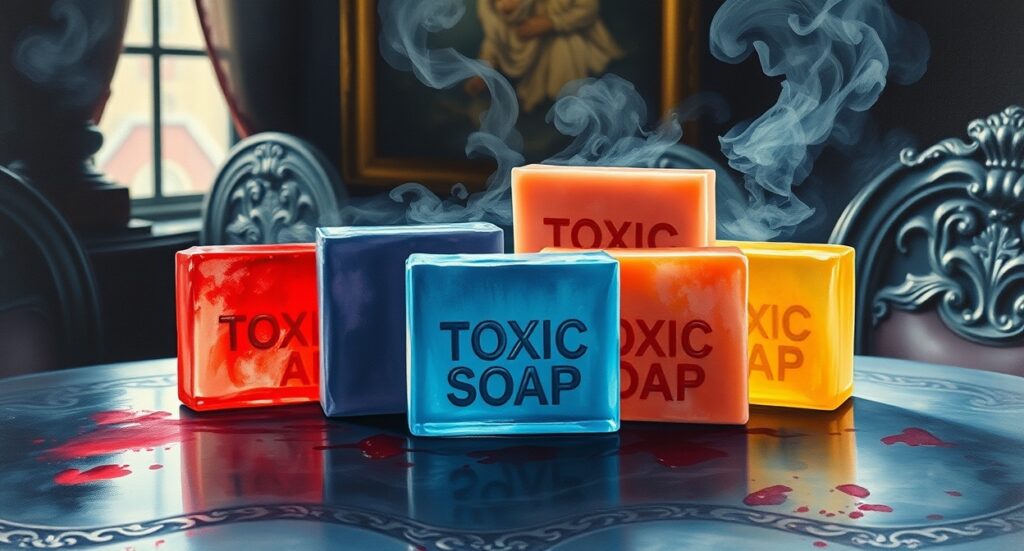
Dangerous Past Soap Ingredients and Why They’re Banned Ever wondered what went into soap centuries ago? From toxic minerals to questionable animal-based extracts, historical soap recipes were filled with substances we wouldn’t dare touch today. Dive into the fascinating—and sometimes horrifying—world of old soap-making ingredients that are now strictly off-limits. Animal-Based Ingredients: Cruel and Controversial Throughout history, animals were often at the heart of soap-making. Whether through exotic scents like musk and civet or fats sourced from slaughterhouses, these ingredients played a key role in creating lather and fragrance. Today, ethical concerns and environmental awareness have rendered these substances obsolete. Natural Musk: Extracted from the scent glands of male musk deer, musk was a prized ingredient for luxurious soaps. However, the process of obtaining musk often resulted in the death of these animals, driving them to near extinction in some areas. Today, synthetic musk provides a cruelty-free alternative. Civet: Derived from the perineal glands of civet cats, this musky scent was once used in high-end soaps and perfumes. The inhumane conditions under which civets were kept led to widespread criticism, and the ingredient has been replaced by synthetic or plant-based substitutes. Animal Fats: Fats from slaughtered animals, such as tallow and lard, were common in soap-making. While not inherently toxic, the reliance on industrial slaughterhouses raises ethical concerns. Many modern soaps now use plant-based oils, such as coconut or olive oil, as sustainable alternatives. Eichenmoos (Oakmoss): A lichen-derived ingredient with a woody, earthy scent, oakmoss was popular in historical fragrances. However, its potential to cause severe allergic reactions has limited its modern use. Mineral-Based Ingredients: A Toxic Touch of Color Minerals provided vivid pigments for historical soaps, but many came with a deadly cost. From arsenic-laden greens to cadmium yellows, these once-beloved colors are now synonymous with toxicity. Modern alternatives ensure vibrant hues without the health risks. Schweinfurter Grün (Paris Green): This vivid green pigment was made from copper and arsenic compounds. While it created stunningly colored soaps, its toxicity led to severe health problems, including poisoning from skin contact or inhalation. Auripigment and Realgar: These arsenic-based pigments produced brilliant yellows and reds but were highly toxic. Even handling these minerals could cause arsenic poisoning. Cadmium Colors: Bright yellows and reds were achieved using cadmium compounds. Cadmium is now known to be carcinogenic and highly toxic to the environment, making its use untenable. Neapelgelb (Naples Yellow): A lead-based pigment, it was once prized for its soft yellow tones. Lead poisoning risks have led to its complete ban in consumer products. Chemical Concoctions: Innovations Gone Wrong The rise of industrialization brought a wave of synthetic additives to soap-making. While some improved performance, others—like formaldehyde and phthalates—proved to be harmful to both people and the planet. These banned substances remind us of the fine line between innovation and safety. Formaldehyde: Used as a preservative in soaps, formaldehyde is now recognized as a carcinogen and a potent skin irritant. Its use is strictly regulated in modern cosmetics. Lilial (Butylphenyl Methylpropional): A synthetic fragrance ingredient once loved for its floral scent. It was banned in the EU in 2022 after being classified as toxic for reproduction. Diethylphthalate (DEP): Commonly used as a fixative for fragrances, DEP was later found to have hormone-disrupting effects. Public awareness and stricter regulations have largely phased it out. Ethanolamines (DEA, MEA, TEA): Used as pH stabilizers and foaming agents, these substances can react with other ingredients to form nitrosamines, which are carcinogenic. Salts and Acids: Corrosive and Harmful Borax: A common water softener and emulsifier, borax is now classified as a reproductive toxin and is banned in many countries for use in cosmetics. Chlorinated Lime: A mix of calcium hydroxide and calcium hypochlorite, this was used as a bleaching agent. It’s highly corrosive and poses serious risks to skin and eyes. Sodium Hypochlorite: Essentially liquid bleach, it was used in cleaning and whitening soaps but is highly irritating and unsafe for regular use. Sulfurous Acid: Used as a bleaching agent, it caused skin irritation and respiratory issues. Oxalic Acid: Historically used for bleaching, this acid is highly toxic if ingested and can cause skin burns on contact. Nitric Acid: Occasionally used in industrial soap-making, its highly corrosive nature made it too dangerous for continued use. Conclusion: The history of soap-making is a journey through trial, error, and, sometimes, danger. While early soap-makers sought to innovate, their reliance on harmful ingredients often came at a cost to health, safety, and ethics. Today, modern formulations prioritize both effectiveness and consumer well-being, ensuring that soap no longer poses hidden risks. By understanding the past, we can better appreciate the progress that has led to the safe, sustainable products we use today.
The Art of Waiting: Patience in the Soap Curing Process
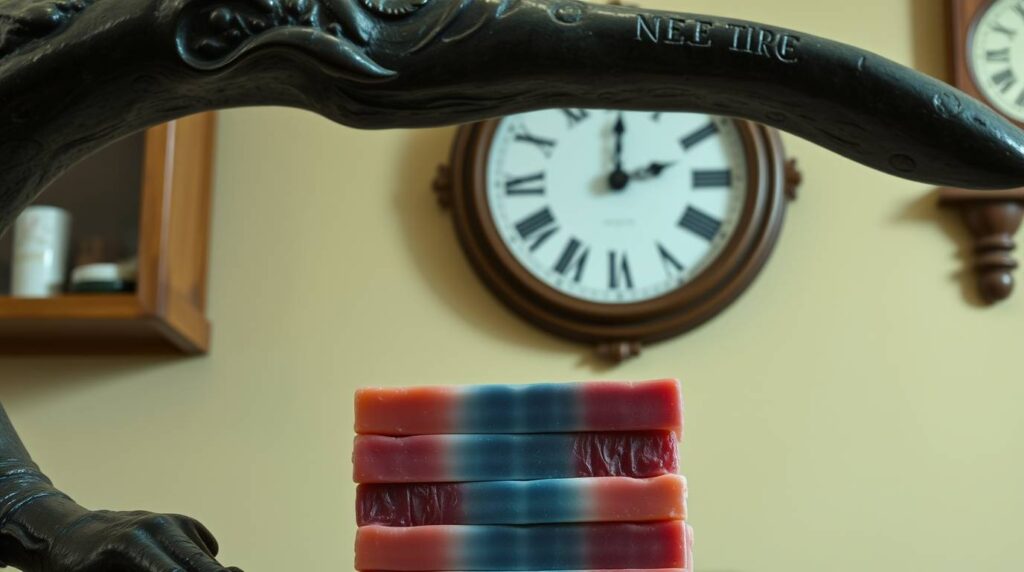
The Art of Waiting: The Chemistry and Transformation of Soap Curing Handcrafted soap is more than just a cleaning agent—it’s a product of artistry, chemistry, and above all patience. While the initial creation of soap through saponification is a rapid chemical reaction, it is the curing process that truly transforms a freshly made soap into a high-quality, skin-friendly product. This process, which typically lasts 4-6 weeks or longer, allows the soap to develop its optimal properties, including gentleness, longevity, and a delightful user experience. Why Does Soap Need Time to Cure? Soap making is not just about mixing oils and lye—it’s a chemical reaction called saponification. In this reaction, fats (usually plant-based or animal-derived) interact with lye (sodium hydroxide, NaOH) to create soap molecules and glycerin. While saponification itself is the first step, the soap requires additional time to fully develop its skin-friendly properties. Kevin Dunn, a recognized expert in soap chemistry, explains that freshly made soap is often still quite alkaline, which can irritate the skin. During curing, the soap’s pH gradually decreases as any residual lye is neutralized, making it milder and gentler. Difference between saponification and curing Saponification: The chemical reaction between lye (NaOH) and fats or oils produces soap molecules and glycerin. Curing: This is the process where soap develops its consistency, texture, and skin-friendliness by losing excess water and neutralizing residual lye. Why Does Soap Need Time to Cure? The Chemistry Behind the ProcessSoap making is not just about mixing oils and lye—it’s a chemical reaction called saponification. In this reaction, fats (usually plant-based or animal-derived) interact with lye (sodium hydroxide, NaOH) to create soap molecules and glycerin. While saponification itself is the first step, the soap requires additional time to fully develop its skin-friendly properties. Kevin Dunn, a recognized expert in soap chemistry, explains that freshly made soap is often still quite alkaline, which can irritate the skin. During curing, the soap’s pH gradually decreases as any residual lye is neutralized, making it milder and gentler. What Happens During Curing? Saponification and Lye Neutralization: The primary reaction of fats or oils with sodium hydroxide (NaOH) produces soap molecules (fatty acid salts) and glycerin. While this reaction completes within hours, residual NaOH remains in the fresh soap. During curing, this residual lye reacts with carbon dioxide (CO₂) from the air to form sodium carbonate, reducing the soap’s pH and making it gentler on the skin. Water Evaporation: Fresh soap contains a significant amount of water used during the manufacturing process. Over the curing period, this water evaporates, resulting in a harder, longer-lasting bar. Reduced water content also minimizes microbial growth, improving the soap’s shelf life. Crystallization of Fatty Acid Salts: As the soap cures, its molecular structure stabilizes. Fatty acid salts crystallize, which contributes to the soap’s firmness and consistency. Soaps rich in stearic acid (from oils like shea butter or palm oil) tend to develop a particularly durable structure. pH Stabilization: Fresh soap typically has a pH between 10 and 11, which can feel harsh on the skin. Curing reduces this pH slightly, creating a product that is more balanced and gentle. Fragrance and Additive Integration: Over time, essential oils and fragrance oils distribute evenly throughout the soap. Earthy or woody scents deepen, while lighter citrus notes may fade slightly. Additives like clays, activated charcoal, or botanical powders bond with the soap matrix, enhancing cleansing properties and appearance. Physical and Aesthetic Changes Appearance: Initially, soap may appear cloudy or uneven. As it cures, the bar becomes more uniform, often with a matte or silky finish. Some natural soaps may develop a thin layer of “soda ash” (sodium carbonate) on the surface, which is purely cosmetic and harmless. Texture and Hardness: Fresh soap feels soft and sticky to the touch. As water evaporates and the soap matrix stabilizes, the bar becomes firmer, smoother, and more pleasant to handle. A well-cured soap resists crumbling and provides a satisfying tactile experience. Lather Quality: Soap’s lathering properties improve with curing. Coconut oil, for example, contributes to a bubbly, cleansing lather, while olive oil creates a creamy foam. Curing allows the soap to develop an optimal balance of these qualities. Longevity: Softer, freshly made soap dissolves quickly during use. Harder, cured soap not only lasts longer but also maintains its integrity, even with frequent use. In addition to the physical transformations, the curing process also involves important chemical and environmental considerations: Ashley Green, an expert in soap making, emphasizes that patience is essential for the perfect result. Soaps often need 4 to 6 weeks to cure, depending on the fats used and the production method. During this time, water evaporates from the soap, making it firmer and more durable. A well-cured soap not only has a longer shelf life but also feels softer and more pleasant on the skin. Chemical and Environmental Details Oxidation and Shelf Life: Unsaturated fats (e.g., from olive or sunflower oil) are prone to oxidation, which can affect the soap’s appearance or scent over time. Proper storage in a cool, dry place minimizes this effect. Glycerin and Hygroscopicity: Glycerin, a byproduct of saponification, is highly moisturizing but also hygroscopic—it attracts water from the air. This can make soap bars feel slightly sticky in humid environments, but it enhances their ability to hydrate the skin. Special Recipes: Castile Soaps (100% Olive Oil): Require longer curing times (6 months or more) to achieve optimal hardness and lather. High Coconut Oil Soaps: Cure faster and produce abundant lather but may require added superfatting to avoid dryness. Milk or Sugar Additions: Enhance lather but may require careful handling during curing due to their moisture-attracting properties. Sustainability: The curing process of handmade soap is environmentally friendly, requiring no energy-intensive machinery. Its low-impact, slow-aging process contrasts with the high-speed methods of industrial soap production, emphasizing sustainability and craftsmanship. To get the most out of the curing process, here are some practical tips based on the insights of Kevin Dunn and Ashley Green: Air Circulation: Store soap in a well-ventilated
Salting out soaps
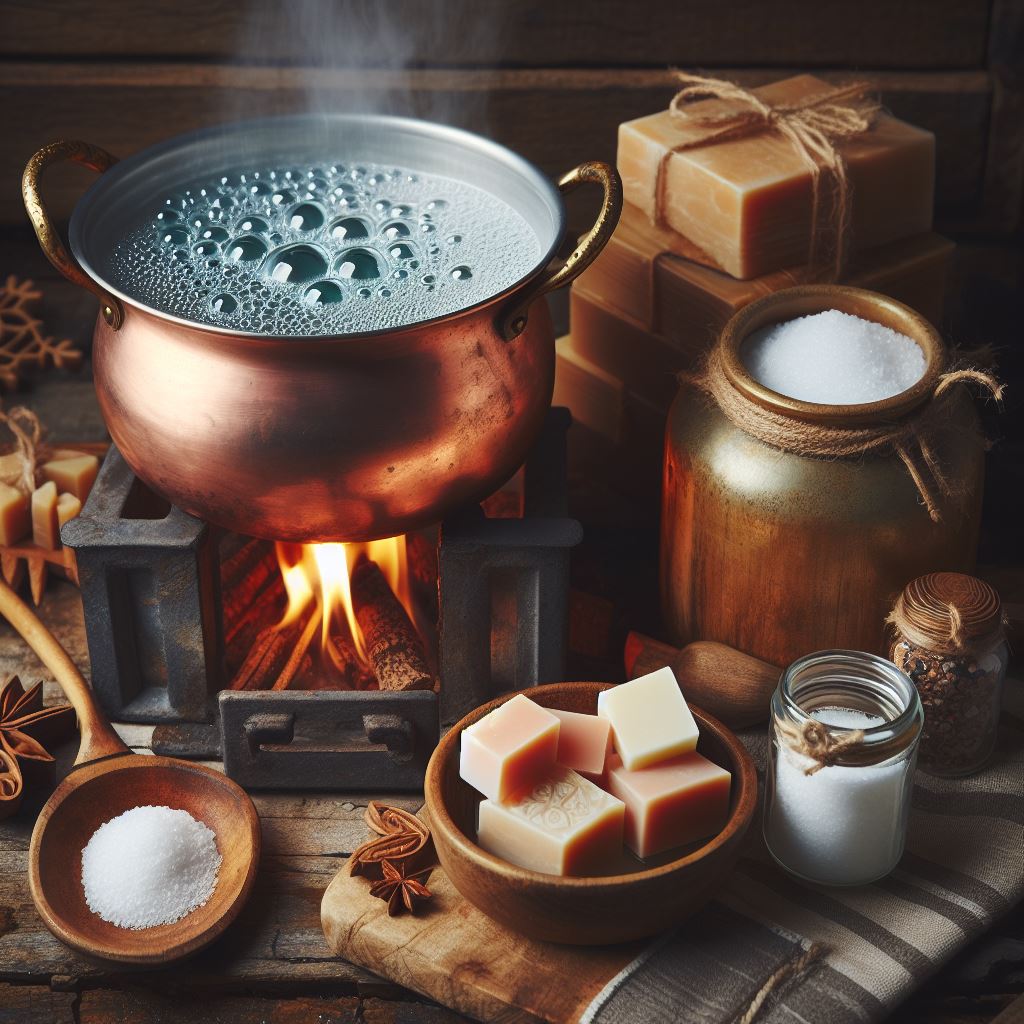
Soap Scraps – Salt them out! If soap scraps need to be turned into useful soap bars, it is usually necessary to rebatch the soap. Alternatively, you can salt out the soap if it is a failed batch, or rebatching is the usual way to get it going again. Why do we salt out soaps? A few hundred years ago, soaps were not made with pure ingredients. They had many impurities, which were washed out by adding salt or another electrolyte. The soaps were also made by potash (K2CO3). Potash soaps are very soft, like KOH soaps. But we can exchange the electrolytes and make KOH and K2CO3 soaps harder by changing KOH soaps to NaOH soaps. But salting out soaps cannot change all KOH to NaOH; there will always be KOH left (1/3 to 1/2 of the soap). This is the reason why these soaps give more lather. Salting out the soap is more time-consuming than rebatching, however, unlike rebatching, it is capable of removing many additives, including color and fragrance, from the soap. Salting out will remove the majority of the natural glycerin found in handcrafted soap, depending on the type of additives and the depth of color. The amount removed depends on the type and depth of color. Rather than mixing and simmering the soap in plain water, it can be more efficient to use a weak lye solution. Of course, NaOH can be added to the salt solution to save time. After the soap scraps have been salted out, what you can expect is that the essentials of the soap (the salt of fatty acids) will remain intact. Best practice to salt out soaps Grate the soap as finely as possible. If necessary, use a salad shooter, food processor, or hand grater to grate the soap into fine shreds, in case the soap is too thick. When weighing ingredients for a recipe, it isn’t necessary to be very precise because perfection is unnecessary. You just need to be close enough to get accurate results. Use about twice as much water as the weight of the soap. You may need more water, depending on the soap you have. I recommend using distilled water, deionized water, reverse osmosis water, or even rainwater if possible. Using tap or spring water that has hard water minerals in it can adversely affect the quality of the finished soap. Temperatures above 70°C (158°F). Use a wide but low pot. The narrower and higher the pot, the longer the process. Never add water without electrolytes. Use a very fluid soap/water mix. When you throw a bit with a spatula in the air, the resulting soap bubbles should be small, clear, and stay intact until they hit a surface. Use between 3 parts water to 5.5 parts water for 10 parts soap. Use 0.3% – 0.5% excess of alkali (use a lye calc and calculate the lye for minus 0.3% superfat). Use a ~10% electrolyte solution, starting with 1% (1 part electrolyte to 99 parts distilled water). Add more electrolytes in small steps until the soap starts to separate. The lower the molecular weight of the soap, the harder it is to salt out. Soaps made from highly unsaturated fatty acids are more difficult to salt out. Laureate, for example, requires a saturated salt solution. When soap is salted out, it goes through several steps: It foams a lot after adding salt and moderate temperature and can easily rise above the rim of the pot. When the soap is cooked longer, it is still liquid but becomes thicker and more viscous. You can see the slurry slide over the wet spatula in flat lumps or flakes. As the salt solution draws water from the soap during prolonged boiling, it becomes thicker and thicker. The salt water collects at the bottom of the pot. The soap throws larger and larger foam bubbles as it boils, and the steam can only escape through very small holes. This produces noises that sound like talking, blowing, or whistling. The surface of the soap is torn into plates. They are pushed over each other by the steam and look dry. When the soap and salt are in equilibrium in terms of their attraction, the soap sinks down, and the foam disintegrates into delineated grains. The soap now has the lowest water content it can have. Now it has become curd soap. It no longer rises even under the greatest heat. The salt solution no longer extracts water from the soap. At this point, it is uniform, and the steam escapes intermittently with violent bubbling. The boiling is finished. Now remove the soap from the pot. The softness corresponds to the respective water content. When you rub a sample between your fingers, it must feel dry, smooth, and not crumbly. If the sample is not soft, you have made a mistake in salting it out and used too much salt. You can start over and dissolve the soap in water and let it boil until the consistency is right. The soap will now take three to ten days to set. You can use a saturated brine solution or add it spoon after spoon. Cook the solution or keep it at low temperature. There are lots of very complicated ways to calculate the heat, the amount of water, soap, and water. But as I don’t want to spend my time calculating, I would rather try it myself. If you used too much salt, you can wash the soap. Grate it, add water, let the soap separate from the salt liquid, … You know the rest. 🙂 Important: Be sure to use proper safety gear and follow safe working procedures when dealing with lye. Even a weak solution of lye can cause dangerous burns, and if splashed on the skin, it can have long-term effects. Conclusion The method of salting out soap scraps provides an effective way to reuse unused soap remnants and transform them into useful soap bars. While it
Soda ash – what, why and how?
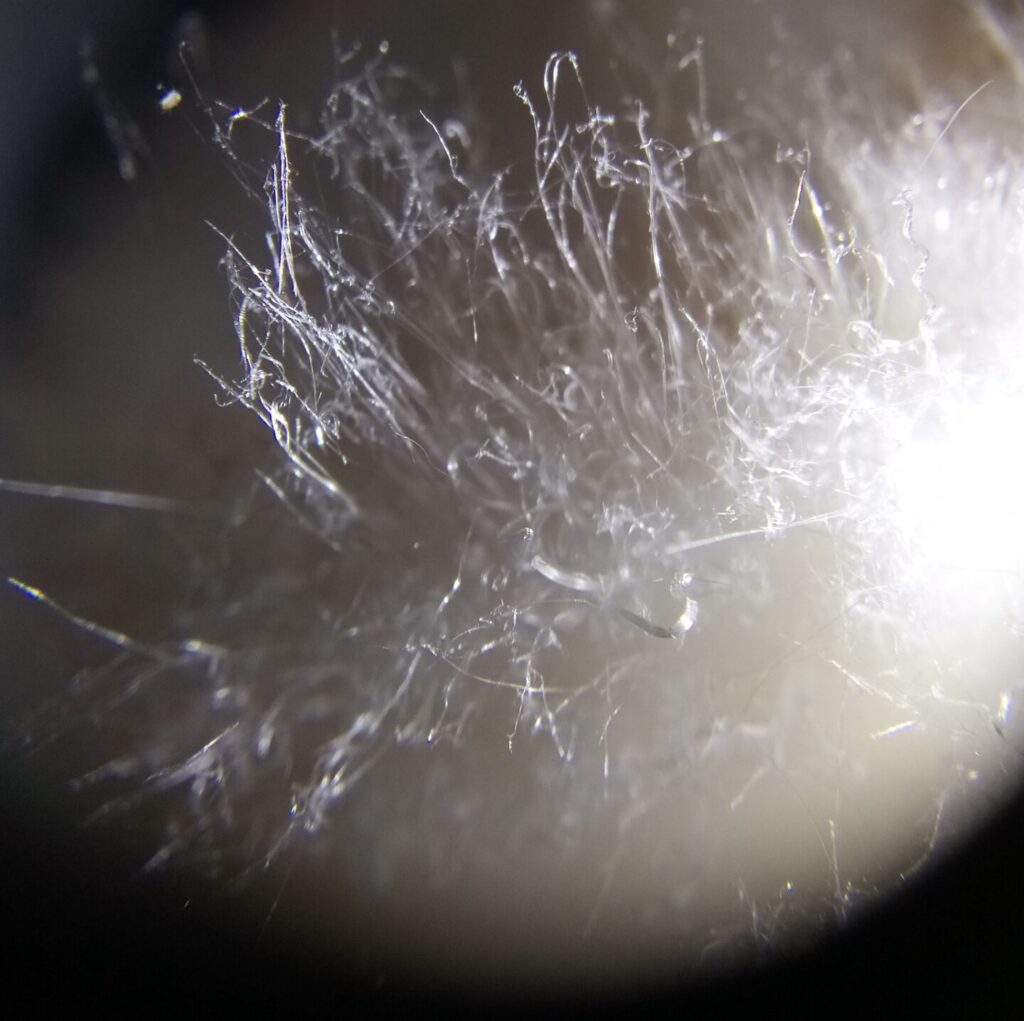
Soda ash – what, why and how? In this article, I would like to provide you with a more detailed explanation of soda ash on soap. Soda ash is a white layer that can form on the surface of handmade soap and is composed of sodium carbonate, which is generated during the saponification of oils and fats. What is Soda Ash? Soda ash is a chemical compound with the formula Na2CO3. It is a white, inorganic powder found in nature in the form of minerals such as a mixture of sodium carbonate and sodium hydrogen carbonate (trona) or sodium bicarbonate (sodium hydrogen carbonate). Soda ash is also commonly referred to as washing soda or soda. How Does Soda Ash Form on Soap? Soda ash is produced during the saponification of oils and fats using a lye solution, which can be either sodium hydroxide or potassium hydroxide. During saponification, the fatty acids in the oils and fats react with the lye to create salts of fatty acids, which constitute the actual soap. In addition to soap, the saponification process also yields sodium carbonate. Sodium carbonate is a byproduct of saponification, formed when the lye solution within the soap mixture reacts with carbon dioxide. Carbon dioxide is a gas present in the air and may also originate from the water used in the soap-making process. Additional Insights: Effect on Fragrance: In some cases, soda ash formation might trap fragrance oils, affecting the scent of the soap. Soap makers may need to consider this when formulating their recipes and choosing curing methods. Humidity Impact: Humidity levels in the curing environment can influence soda ash formation. Higher humidity can accelerate the formation of soda ash, while lower humidity may slow it down. Soap makers may need to adjust their curing conditions accordingly. Alternative Prevention Methods: Besides the methods mentioned, some soap makers also use techniques like spraying the soap surface with rubbing alcohol after pouring it into molds. This can create a barrier that helps prevent soda ash formation. Long-Term Storage: Even if soda ash forms initially, it may sometimes dissipate over time during the curing process or with proper storage. Soap makers often recommend allowing the soap to cure for several weeks to months for optimal quality, during which soda ash may naturally diminish. How Can Soda Ash on Soap Be Prevented? Soda ash can be prevented through several measures: Carefully cover the soap mixture: Always securely cover the soap mixture with plastic wrap or a cloth to prevent it from coming into contact with carbon dioxide. Allow the soap to fully cure Do not unmold the soap too early: before removing it from the mold, typically around 24 hours. Use distilled water: Distilled water does not contain carbon dioxide. Using distilled water can reduce the formation of soda ash. Use distilled water: Distilled water does not contain carbon dioxide. Using distilled water can reduce the formation of soda ash. How Can Soda Ash on Soap Be Removed? Soda ash can be removed from soap using a steamer or a damp cloth. Steamer: Place the soap in a steamer and steam it for a few minutes. This will dissolve the soda ash, making it possible to wipe it away with a soft cloth. Damp Cloth: Rub the soap with a damp cloth to dissolve the soda ash, then wipe it away with a soft cloth. Click Here for additional information about soda ash! Soda Ash Additional Information Soda ash is a naturally occurring substance found in minerals in nature. Soda ash is used in various industries, including glassmaking, detergent production, and papermaking. Soda ash can also be used as a cleaning agent. Edit Template Conclusion Soda ash is not harmful to the skin but can affect the appearance of the soap. To avoid soda ash formation, follow the above-mentioned tips.
Glass Disease
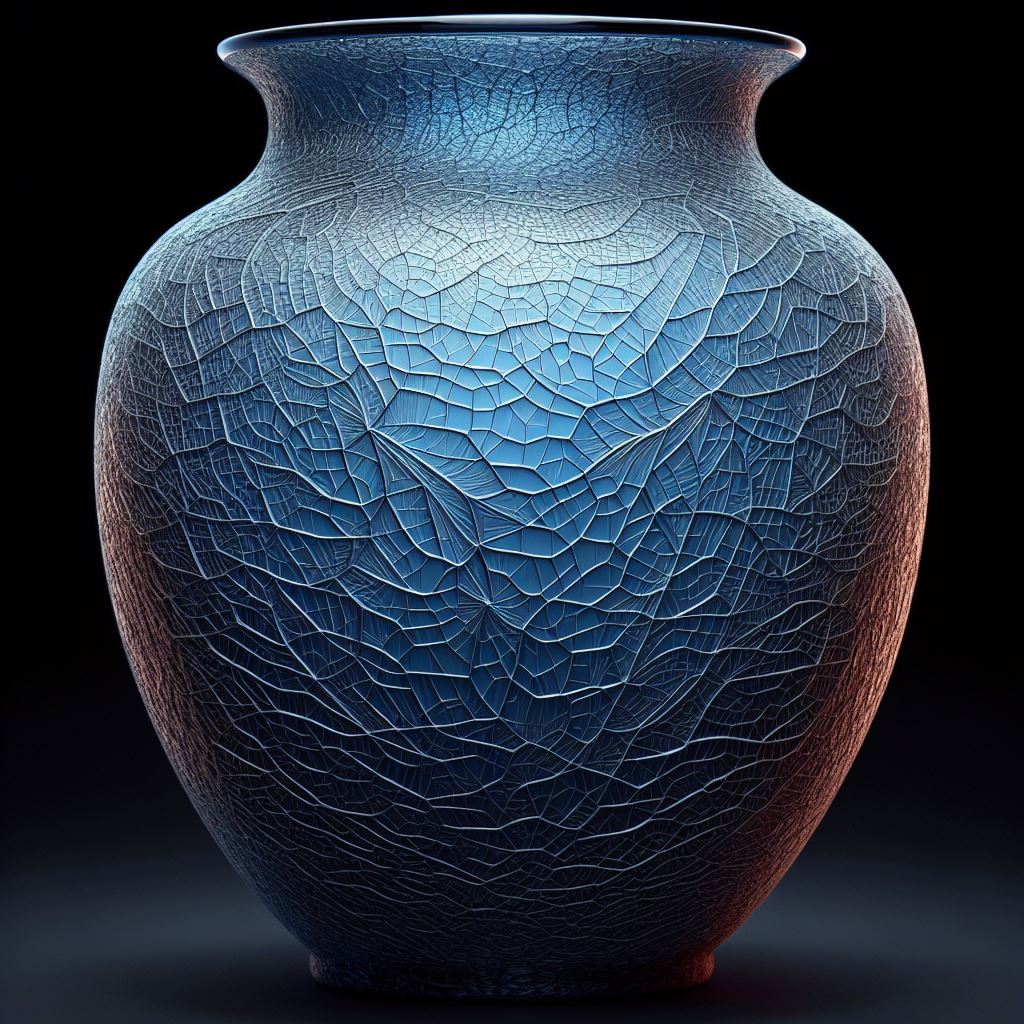
Glass Disease: A Threat to Glass Products Discover the unseen menace lurking within your glass products. From weeping to fragmentation, learn how Glass Disease wreaks havoc and why your glass containers may be part of the problem. Stay tuned for insights into prevention and detection. Protect your glass investments before it’s too late. Glass Disease, also known as “glass malady” or “glass sickness,” is a serious issue that can compromise the integrity of glass products such as windows and doors. This process of decomposition can lead to a variety of symptoms, including weeping, crizzling, spalling, cracking, and even fragmentation. Understanding the causes, symptoms, and prevention measures of this disease is crucial for ensuring the longevity of glass products. Causes of Glass Disease Causes of Glass Disease The main cause of Glass Disease lies in the unstable chemical composition of the glass formula. This instability can be caused by various factors, including: Alkali leaching: Alkali metal ions can leach out of the glass, leading to an increase in the pH level on the surface and the dissolution of silicon in the glass. Lime and alkali metals: The ratio of lime to alkali metals in the glass plays a crucial role in its stability. A lack of lime oxide can cause the alkalis in the glass to become insoluble. Temperature and humidity: Changes in temperature and humidity can affect the composition of the glass, thus endangering its stability and integrity. Environmental conditions: External factors such as humidity and temperature can accelerate the process of glass decomposition. Symptoms of Glass Disease Symptoms of Glass Disease Recognizing the symptoms of Glass Disease is important to take timely action. These include: Weeping: Leakage of alkalis from the glass, known as “weeping.” Crizzling: Formation of a characteristic network of fine cracks visible to the naked eye. Spalling: Formation of distinct cracks on the surface of the glass, accompanied by material detachment. Cracking: Formation of distinct cracks on the surface of the glass. Fragmentation: Breakdown of the glass object into pieces in the final stage of the disease. Why Glass Containers Should Be Avoided Glass containers should be avoided in soap making as the lye used in soap making can react with glass. Lye is highly alkaline and can attack the surface of the glass, leading to the release of alkalis. This exacerbates the process of alkali leaching, thus accelerating the development of Glass Disease. Prevention and Detection Glass Disease poses a serious threat to the integrity of glass products and requires a fundamental understanding of its causes, symptoms, and prevention measures. Through regular inspections, proper care, and control of environmental conditions, we can contribute to prolonging the lifespan of glass products and maintaining their beauty and functionality. In soap making, it is especially important to avoid glass containers to prevent accelerating Glass Disease, as lye can react with glass. Conclusion: In conclusion, Glass Disease presents a significant challenge to the longevity and integrity of glass products. From the insidious onset of weeping to the dramatic fragmentation in its final stages, this degradation process demands attention and action. Understanding its causes, symptoms, and preventive measures is crucial for preserving the beauty and functionality of glass items. Whether it’s through controlling environmental conditions, avoiding reactive materials like glass in certain processes such as soap making, or regular maintenance, proactive steps can mitigate the impact of Glass Disease. Let’s safeguard our glass investments and ensure they stand the test of time against this silent adversary.
OFFBEAT SOAPING

Offbeat soaping Here you will find everthing about offbeat soaping. AllgemeinOffbeat Soaping Offbeat soaping AllgemeinHistoryOffbeat Soaping Alchemy in Soaping